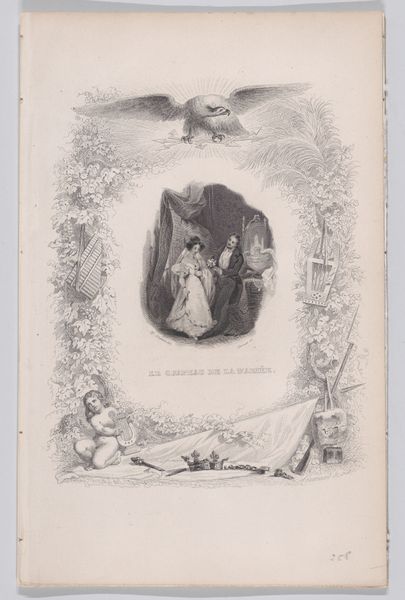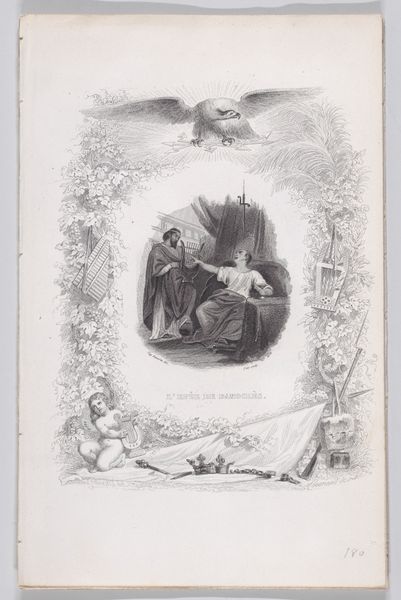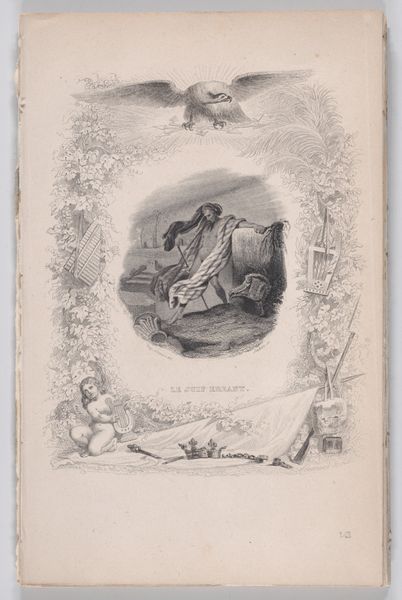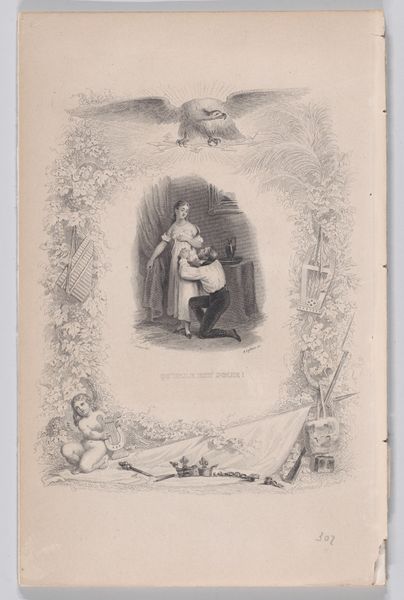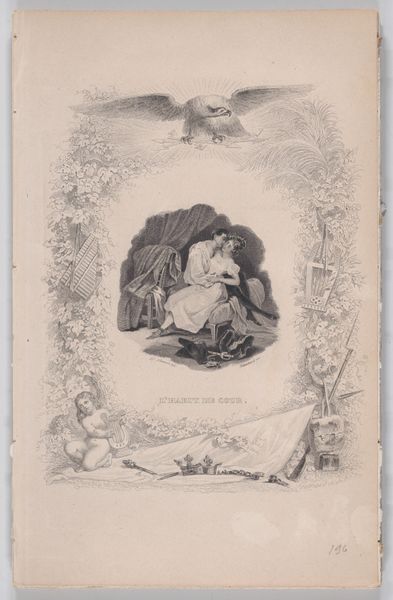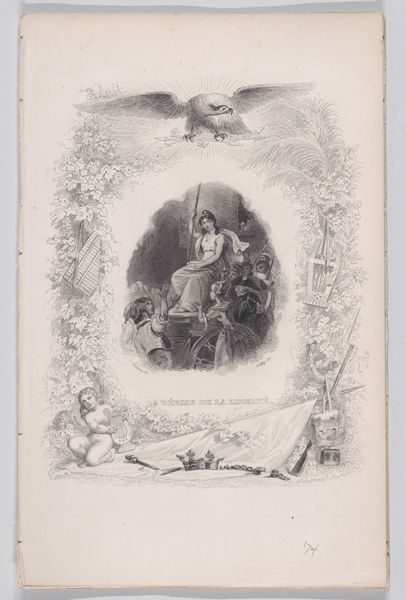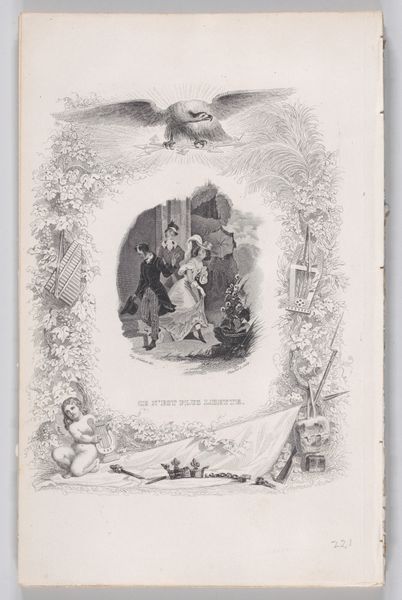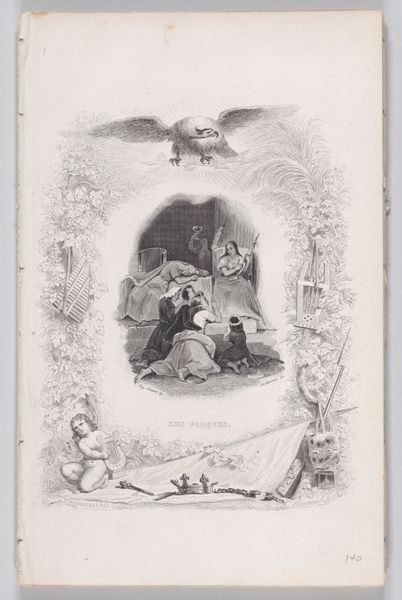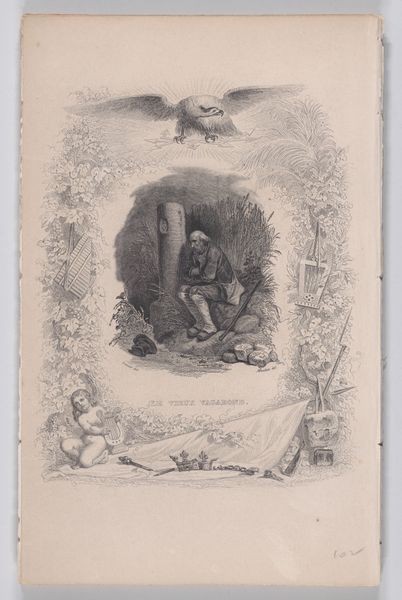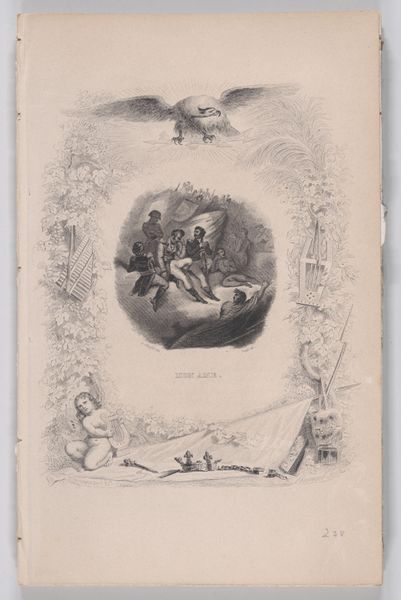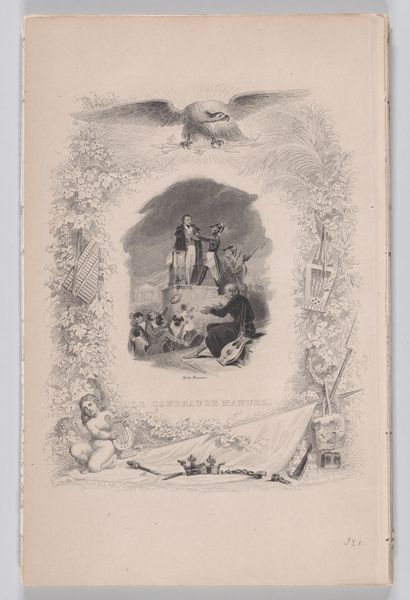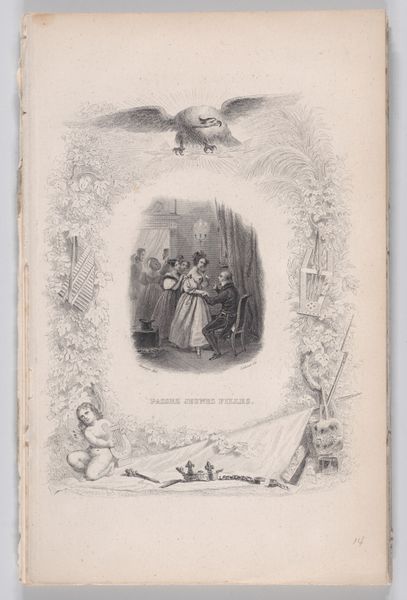
drawing, print, engraving
#
drawing
#
allegory
#
narrative-art
# print
#
romanticism
#
engraving
Dimensions: Sheet: 8 5/8 × 5 1/2 in. (21.9 × 14 cm)
Copyright: Public Domain
Curator: The immediate impression is of delicacy; there's a gentleness in the rendering, despite what seems like quite loaded imagery. Editor: Indeed. This is an engraving by François-Louis Français from 1829, titled "Octavie" from The Songs of Béranger, currently held at the Metropolitan Museum of Art. What interests me is how such seemingly fragile artwork participates in a much wider political theater. Béranger was famous for his political songs. Curator: Ah, I see. So it is designed as an allegory... the broken chains, the discarded crown... but framed by this floral, almost sentimental border, the eagle looking down. A broken, if formerly proud, imperial regime. Editor: Precisely. Think about the historical context – this is post-Napoleonic France. Béranger’s songs, often critical of the monarchy, were immensely popular, and widely distributed precisely through printed images like this. The cherub at the bottom almost seems to offer a gentle lullaby to the fallen era. Curator: It also suggests a kind of cultural continuity. The lyre is very deliberate—this harkens back to an era of poetic thought—art rises even if empires fall. It is a commentary on history being composed as a form of song, that gives it great power over memory and emotions. Editor: Right. And let's not overlook that central scene, where Octavie tends to someone reclining in bed. I am curious as to the artist’s intentions for placing this emotional and vulnerable domesticity into a picture meant for broad dissemination. Curator: I think it humanizes the fallen power—or at least acknowledges its suffering. It pulls at the heartstrings, even as the overt symbols point to revolution or change. And what’s especially evocative for me, is the tenderness of the vignette amidst otherwise triumphant visual components. The image conveys both pathos and symbolic aspiration, inviting meditation. Editor: Absolutely. It's a powerful reminder of how art, even in what appears as decorative form, plays an integral part in the grand play of public life and the politics of identity. It is really fascinating how these intimate scenes tie to broad narratives of power. Curator: Yes, this small print reflects enormous socio-historical shifts and the artist captured, so aptly, the intimate reflections nested inside those dynamics.
Comments
No comments
Be the first to comment and join the conversation on the ultimate creative platform.
